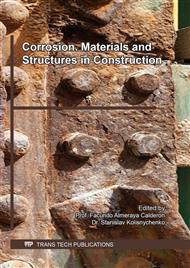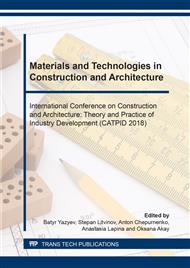p.362
p.368
p.373
p.379
p.385
p.391
p.396
p.405
p.411
Estimation of Factors of Aggressive Influence and Corrosion Wear of Underground Structures
Abstract:
There is an intensive construction of sewage collectors in the cities. The main structural material used in the construction of collector tunnels is reinforced concrete. Services engaged in the operation of sewage systems, increasingly began to face the destruction of concrete of non-pressure sewer collectors as a result of gas corrosion. Concrete corrosion takes place only in non-pressure manifolds, in the protruding part of the water pipeline or tunnel. The maximum intensity of corrosion is observed in the area, adjacent to the axis of the arch. Сorrosion damage can occur intensively on the walls and in the zone of variable water level. The article analyzes the causes leading to corrosion of reinforced concrete in tunnels.
Info:
Periodical:
Pages:
385-390
Citation:
Online since:
September 2018
Authors:
Keywords:
Price:
Сopyright:
© 2018 Trans Tech Publications Ltd. All Rights Reserved
Share:
Citation:



